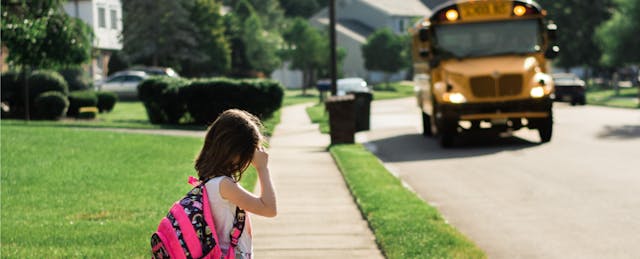Anthony Principe worked as a special education teacher in Boston, Mass. for more than 30 years, and throughout that period he watched the educators in his city experiment with different instructional philosophies. From Montessori to personalized, to college and life-prep schools, individual campuses picked up pedagogies and transformed their learning spaces.
Yet, Principe worries that this roulette of school models, where there is little consistency between schools and grade levels, creates more challenges for students.
“I talked to an elementary school teacher at a Boston meetup, and she put together a whole personalized learning system for grades K-3. It was so impressive,” explains Principe. “But when I asked her what would happen after the kids left her school and went to the middle school, she shrugged her shoulders.”
For Principe, this type of response indicates a problematic lack of planning between schools. He is not alone in that sentiment. Dr. Jennifer Symonds, an assistant professor at the University of Dublin and author of the book “Understanding School Transition: What Happens to Children and How to Help Them,” argues that a student’s level of engagement in a new environment often rides on the success of their transition.
“Stage-Environment-Fit Theory says that if the match between the children, their stage of development and new school environment is a good fit, they should be motivated to want to engage in school,” explains Symonds in an interview. “However, if the fit is poor, then it is likely the student will have a negative developmental trajectory, meaning they may disengage or take on an anti-learning persona.”
In the transition from elementary to middle school, students can expect to see changes in the demographic compositions, where a child who is the ethnic majority in one school may become a minority in another or vice versa. They can also see changes in a number of resources or the school size. Some students move from schools where there is a single teacher for all subjects to a specialist teacher for each topic (which limits opportunities for relationships with teachers). All these changes significantly influence a child’s development, Symonds notes. For special education students, the challenges can be immense.
“Discontinuity is a particular problem for children with special needs because they can have more problems adapting to novelty and change in their environment. Their experience to school transition is generally tied to whatever disability or need they have,” says Symonds.
For example, Symonds notes that student with dyslexia may be concerned about their performance in English class and how they reveal this challenge to classmates, who they fear may pass judgment. Students with other learning challenges may require different kinds of support when adjusting to new physical environments, buildings, grounds, and layouts—a struggle that could be daunting when moving from a traditional classroom to a flexible seating space.
Transition challenges such as moving from smaller to larger schools and changing demographic compositions have all been researched in the past. However, problems student face moving from one pedagogical practice to another—causing students to change the way they think and learn—is a space Symonds says needs more exploration.
The Florence School District in Florence, Ala. is one place where educators are thinking seriously about a child’s transition between different school models. Jill Edwards, the assistant principal at Florence High School, tells EdSurge that creating consistent instructional practices and environments between grades and schools is benefiting both her fellow teachers and the students.
“When there is no connection between learning practices taught in elementary, middle and high school, teachers do not recognize the importance of what they are doing,” explains Edwards. “They may not focus on building skills necessary for success in a particular high school model when they only focus on elementary. When I came from the middle school to our high school, I realized there were so many things I wish I knew.”
Edwards says that continuity between schools helps students develop their learning trajectories, giving their work more meaning. Her district, which focuses on personalized learning and career readiness, now has instructional partners at all seven campuses who meet regularly to share developments and try to bring commonality between schools. District officials are also planning more district-wide professional development opportunities to make sure all their educators “speak the same instructional language.”
“We need to be on the same page. Otherwise, it is like some schools get into one type of strategy, and other schools get into another. Having a common language helps us speak to each other and understand that we are all united in where we are going and what we are doing,” explains Edwards.
Each school in Florence is also working to develop data notebooks where students at every level chart their courses and progress between campuses. In the notebooks, students can see their strengths, weakness and development over time.
The level of collaboration and coordination at Florence follows many of Symonds’ suggestions about how educators can build bridges between transition periods. She says educators should focus on connecting administration, social activities, pedagogy, curriculum and student self-management practices between schools. These types of bridges, outlined in detail within her book, offer teachers the opportunity to communicate, plan and in some instances teach together.
Next spring, Symonds plans to release a manual to support teachers and administrators in building these bridges. The document, titled PROSPER (Professional Student Program for Educational Resilience) will be available to download for free.
“We want to build competencies like motivation, self-regulation, learning goals, and co-regulated learning,” explains Symonds. “Students need to develop these soft skills for successful transitions.”


